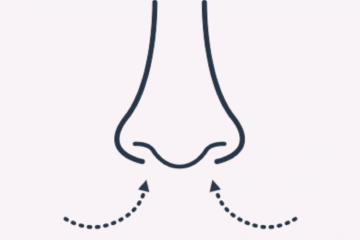Tendonitis or Tendonosis? What’s the difference?
Just like back pain, knee pain and neck pain, “tendonitis” is also something we as therapists see on a regular basis, whether it is the shoulder, elbow, ankle or foot. Let’s use plantar fasciitis as an example. If we break the word down, plantar means bottom of the foot, fascia is a band or sheet of connective tissue, and itis means inflammation. So this means that there is inflammation of the connective tissue on the bottom of the foot. In the time that I have been practicing I have learned that “ITIS” is often misused and there is actually increasing evidence that supports that there are in fact physical changes to the collagen-the tissue that makes up the fascia. These changes when viewed under a microscope show signs of disorganization and degeneration. Think of uncooked spaghetti which is nice and striated which would represent healthy fascia vs cooked spaghetti which would be all tangled and jumbled together which represents a tendinosis. So what originally may have started as an inflammatory condition is most times actually a degenerative condition. If caught early in its’ true inflammatory state, it typically would be quick to heal, however most people that come in the doors usually do not decide to come in until it has been nagging them for weeks or even months. If something has been bothering you for more than 90 days, it would be considered a chronic condition. So how does one tackle this chronic condition. I’m glad you asked, however, one must first understand the physiology of tissue healing and regeneration first before you can truly understand what you’re dealing with. To put it in a simple way the tissue must be stressed enough, stretched enough, and loaded enough to stimulate new tissue formation.
Have you ever been to the gym, worked out, or heck even lifted something heavy up some stairs and experienced soreness the following day. When soreness occurs it is the result of causing microinjuries/tearing into the tiny fibers that make up a muscle. Now hold on, did I just say that you are tearing muscles every time you work out? Technically yes, however you are not tearing the muscle as a whole. You are making tears so small they can only be seen through a microscope and it is only to specific fibers within the muscle that you happened to stress. This is typically how hypertrophy occurs -increase in muscle size. You stress it enough and it stimulates new tissue regeneration. This is exactly what needs to happen to the tendon/fascia in order to get new healthy and tissue formation. The only problem with this is the fact that fascia and tendons are not highly vascular, meaning they are not rich with blood flow the way muscles are. So when you see a picture of muscle this is why it is typically red and the tendons and fascia are white. The breaking down and regeneration of the tissue is possible, however it typically is a long process that involves a lot of patience and consistency. People often are not patient enough and give up when the progress is too slow for their liking. Another thing that can be tricky is finding just the right amount of stress to promote healthy tissue formation without over stressing/irritating it and making things worse. This is why one should be under the supervision of a medical professional when treating this type of a condition. Too often we have people come into our office who tried to take matters into their own hand without truly understanding what is happening in their bodies. Information that you read online that is supposed to help or treat a specific condition often times can makes things worse. I also often see that the location of the “tendonitis” is more of just an effect and the cause is actually somewhere else, for example, bicep tendonitis resulting from lack of overhead mobility due to stiffness in the thoracic spine. I think the big take home message from the cause and effect relationship I just mentioned is that problematic areas one one place can lead to problematic areas in an other place, often manifesting themselves as some sort of overuse injury that can lead to a true tendonitis and then after 10 days will start to become a tendonosis. The most efficient and effective way for us as therapists to assess for those problematic areas is with the Selective Movement Functional Assessment. It is a whole body movement assessment that allows us to find dysfunctional movement patterns. Stay tuned for my next blog where I will be discussing exercises to treat plantar fasciosis aka planta fasciitis.
If you have any questions of information you can always contact Chandler Physical Therapy at 480-786-4969
Savannah Torrez, PT, DPT, COMT
“Some people want it to happen, some wish it would happen, others make it happen.” -Michael Jordan



